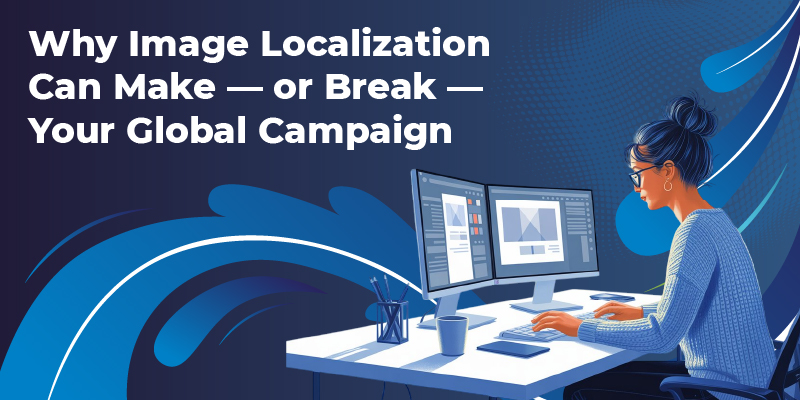
When marketing materials cross borders, translating copy is only half the job. Images carry their own cultural assumptions, and a photo that feels neutral at home can ring tone‑deaf—or even offensive—elsewhere. From product labels that mislead to gestures that insult, visual miscues have derailed otherwise solid campaigns and eroded brand trust overnight.
Lessons From Costly Missteps
- Gerber in parts of Africa – Using the familiar baby‑face jar label backfired in regions where packaging typically shows a product’s contents or ingredients. The launch of baby food with a smiling baby on the jar led to confusion among shoppers. This led to very poor sales and untold brand damage.
- Fashion imagery in India – A shoe ad featuring models with soles pointed at the camera ignored a local belief that showing the bottom of one’s feet is disrespectful. This cultural norm is common in many middle eastern countries as well, underlining the importance of the context of images across international campaigns.
- Alcohol ads under France’s “Loi Evin” – Alcohol advertisements are prohibited on television or in movies in France. For example, a beach‑party visual with carefree alcohol consumption would seem standard in the United States. However this would violate French rules that restrict similar imagery.
Each blunder traces back to a single assumption: if the picture works here, it will work there. Yet symbols, colors, clothing and even framing cues have layered meanings that shift by market.
Why Visual Errors Keep Happening
- Perceived neutrality – Design and marketing teams assume an image is “universal” when it resonates at headquarters.
- Regulatory blind spots – Local advertising, modesty or alcohol laws change what can legally be shown.
- Process gaps – Written ad copy often undergoes rigorous translation review; visuals often slip through without the same oversight.
A Five‑Step Safeguard for Global Imagery
| Step | Action | Impact |
| 1. Build a cultural review checkpoint | Add a visual‑only gate to every international launch so regional experts can flag risks early. | Catches issues before creative is locked. |
| 2. Maintain an image localization library | Document approved, restricted and banned visuals by market—similar to a terminology bank for translators. | Speeds reuse of market‑safe imagery. |
| 3. Run regional test panels | Crowdsource quick feedback from target audiences or partner agencies before a full roll‑out. | Surfaces practical objections outsiders miss. |
| 4. Leverage DAM workflows | A digital asset management system lets teams tag images with metadata—such as country, locale, or language—enabling precise control over where and how assets appear. Santa Cruz Software’s LinkrUI connects DAM libraries directly to Adobe apps. streamlining localization workflows, Designers can automatically surface the most relevant assets for a given market. | Ensures designers pull the right file every time. |
| 5. Automate smart swaps | Creative automation tools such as BannersUI or BrandingUI make it easy to drop in region‑appropriate photos, color palettes or layouts without rebuilding every banner. | Cuts turnaround while preserving brand consistency. |
Creativity Without Cultural Collisions
Adapting visuals is about matching intention to cultural norms for specific geographic locations. A sunset cocktail shot may capture leisure in California. However, in markets with tight alcohol rules, the same spirit can be conveyed with a vineyard dawn. A model in sleeveless attire projects informality in New York but can violate modesty codes in Riyadh, Saudi Arabia. Thoughtful localization keeps the narrative alive while respecting regional sensibilities.
When DAM libraries, metadata, and automation are integrated directly into the creative workflow—as they are with LinkrUI—designers no longer need to guess which asset fits which market. Metadata like locale, language, and regulatory flags can guide image selection automatically inside Adobe apps, ensuring the right version reaches the right audience.

